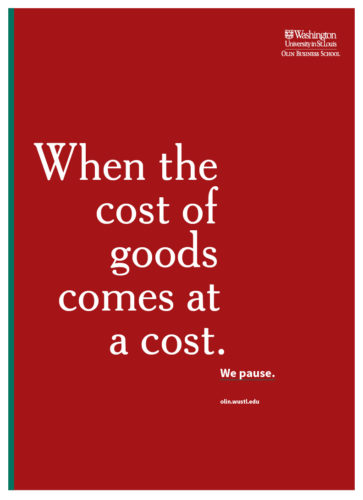 In one of Olin Business School’s newest magazine ads, white text pops from a field of rich red in type that evokes a sense of strength and wonder. Just a few words, strategically aligned on the page, draw the reader into a story of unknown origin—and clear gravity.
In one of Olin Business School’s newest magazine ads, white text pops from a field of rich red in type that evokes a sense of strength and wonder. Just a few words, strategically aligned on the page, draw the reader into a story of unknown origin—and clear gravity.
“When the cost of goods comes at a cost … we pause.”
Within that pause, Olin invites readers to consider the consequences of the decisions they’ll make and the preparation WashU offers for a business world demanding principled, evidence-based leadership.
Within that pause lies the mission of Olin Business School, its promise to students and the marketplace, and the pillars that underpin our strategic plan.
And from within that pause comes the bold voice of Olin Business School’s new brand identity, articulating what we are, what we stand for, and how our strategic plan sets us apart among the world’s top schools.
“We’re making a bold claim on what’s always been in our DNA: That we develop business leaders who create change, for good,” said Dean Mark Taylor, architect of Olin’s strategic plan. “It’s important for all of us to take ownership of this idea so we can clearly articulate our point of view on business education, attract the right kind of talent, and be a distinctive voice in the marketplace, as drivers of global change.”
See the video below to get a better understanding about how Olin will position itself with its brand messaging.
Launching the new Olin brand

Marketing & Communications prepares
for the brand launch event.
The formal announcement of Olin’s new brand strategy came today in a schoolwide event drawing together faculty and staff. With video presentations, digital signs, a champagne toast, and speeches from the dean and a faculty leader, participants heard how the business school will use its brand messaging to talk about the elements of our strategic plan, our vision, our mission, our values, and our strategic priorities.
Dean Taylor stressed the importance of our strategic pillars — particularly the idea that Olin develops values-based, data-driven decision-makers.
“The truth behind those words isn’t new at all. We’ve taken a deep dive into how we want to think and talk about ourselves,” he said, adding to the crowd of faculty and staff assembled for the event “it’s vital that we all take ownership of our brand.”
 The crowd applauded after watching the brand identity video (see above).
The crowd applauded after watching the brand identity video (see above).
Stuart Bunderson, co-director of the Bauer Leadership Center and Olin’s George & Carol Bauer Professor of Organizational Ethics & Governance, reinforced the message: “We want every Olin student to say first, what do the data say and second, what values are at play here” when they are making business-oriented decisions.
After the speeches and a champagne toast, Olin employees dispersed to pick up swag bags, enjoy street food from a group of food trucks on Snow Way, romp at a selfie station, and take headshots that may be used in Olin branding campaigns down the road.
More details about the branding
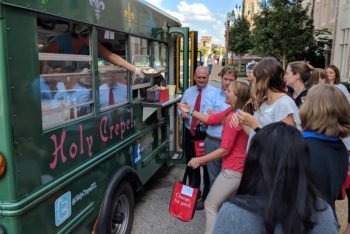 The messaging comes together in a simple positioning statement that boldly declares who we are and how we’re different from other top business schools: “As a premier educator of business professionals, Olin Business School champions better decision-making by preparing and coaching a new academy of leaders who will change the world, for good.”
The messaging comes together in a simple positioning statement that boldly declares who we are and how we’re different from other top business schools: “As a premier educator of business professionals, Olin Business School champions better decision-making by preparing and coaching a new academy of leaders who will change the world, for good.”
We do this through our pillars of excellence, the elements that drive our approach to preparing leaders:
- Values Based and Data Driven
- Globally Oriented
- Experiential
- Entrepreneurial
The brand work also offered an opportunity to address another niggling challenge: Our school’s eight-word, 55-character name. New guidelines offer a more streamlined identity: “WashU Olin Business School,” captured in a more casual brand “mark”—a variation on the formal logo—that we will use as a “nickname” for the school when the full name is also visible elsewhere.

We’ve also taken care to ensure that Olin’s brand aligns with the WashU master brand. The university is often the front door to the business school, so it’s important that the two entities align. Our story starts with the core idea of the master brand, but extends that idea in a relevant and meaningful way.
More information about the strategic plan and the brand messaging strategy is available on the Marketing & Communications section of Campus Groups, where visitors can download logos, templates, and fonts, as well as see guidance on the use of our brand and our colors.


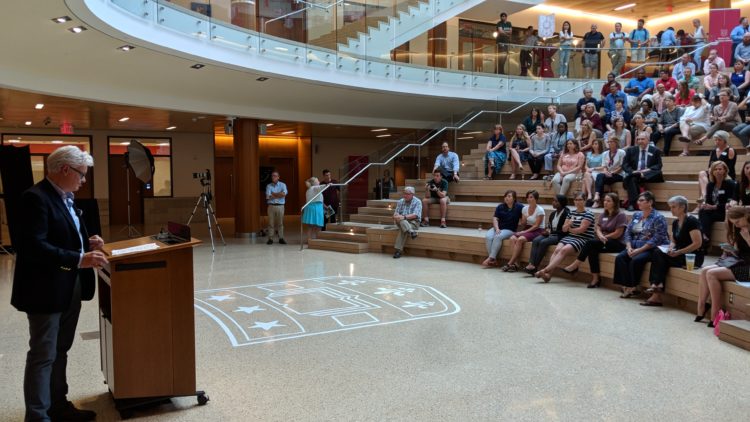

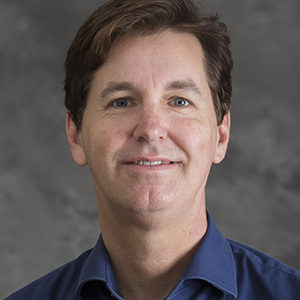
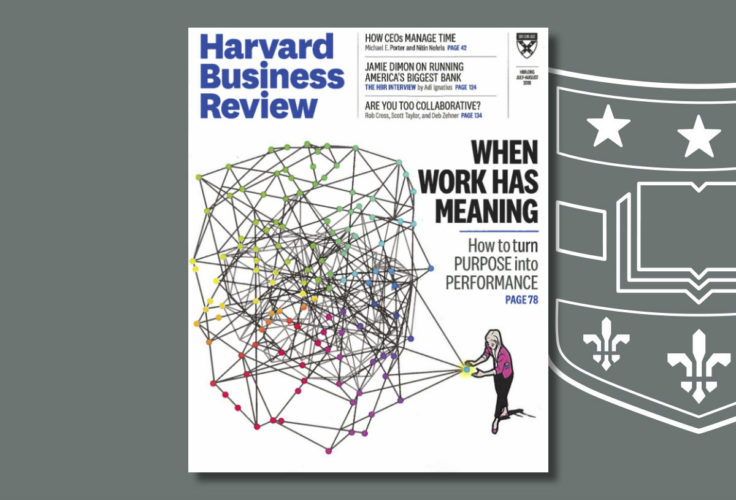

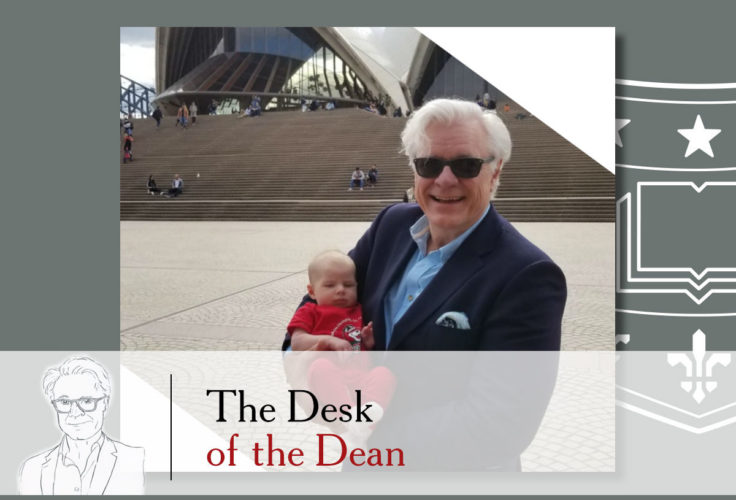
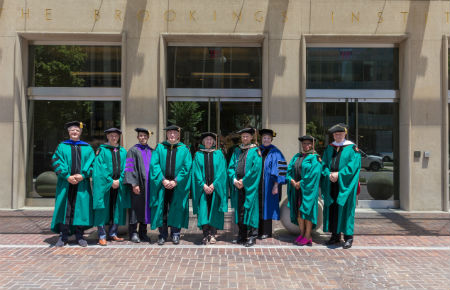
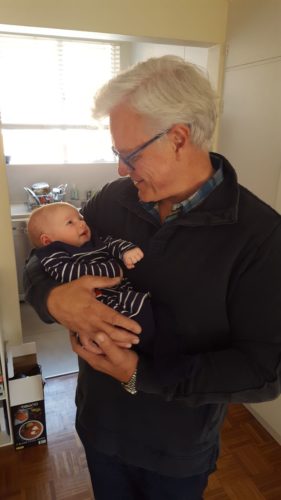

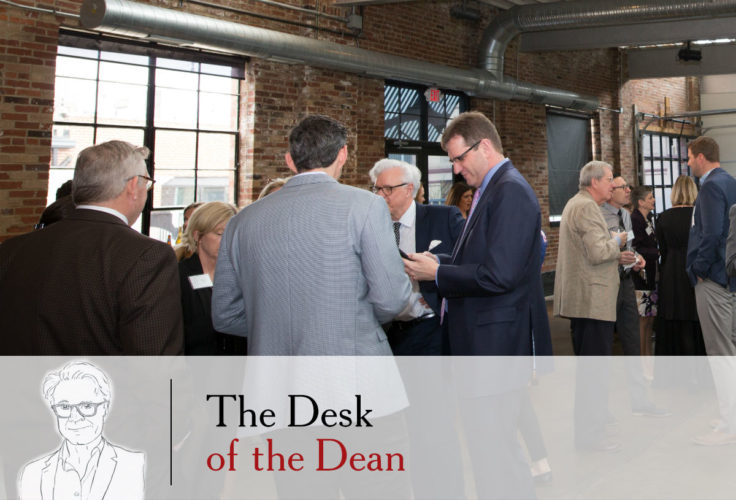
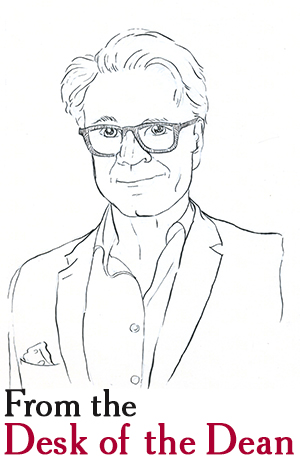 Welcome to the debut of “The Desk of the Dean,” a monthly feature of the Olin Blog by Dean Mark P. Taylor. This column will appear on the first Wednesday of each month.
Welcome to the debut of “The Desk of the Dean,” a monthly feature of the Olin Blog by Dean Mark P. Taylor. This column will appear on the first Wednesday of each month.